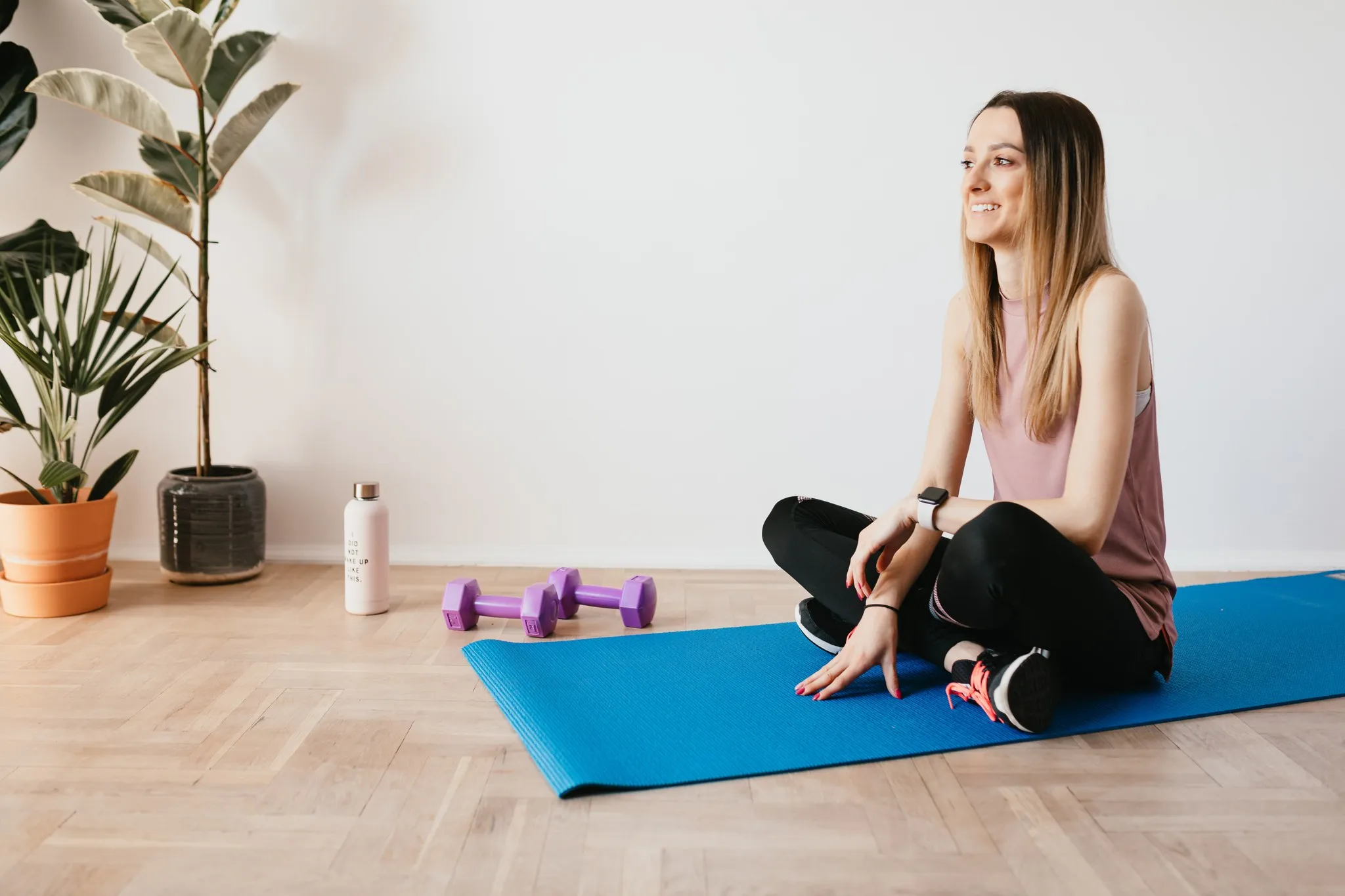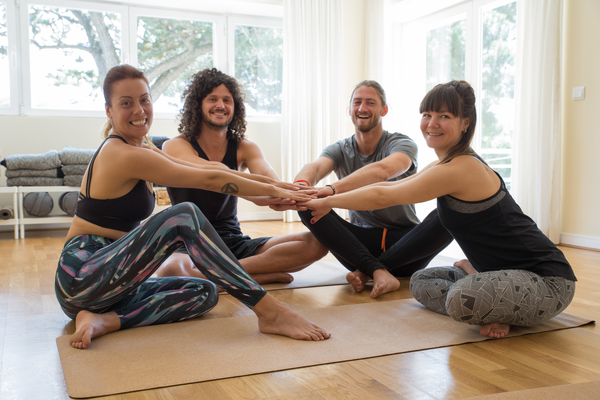

You've probably heard the expression, "laughter is the best medicine," right? That's the basis of laughter yoga.
Laughter yoga is a wonderful practice that involves the standard things you expect from a yoga practice: pranayama, asanas, and mantra meditations. Where laughter yoga differs from traditional yoga practices is the addition of laughter. The purpose? To cultivate joy, relieve stress, and reduce the risk of chronic disease.
If you've never experienced laughter yoga, please join me in my next laughter yoga class on myYogaTeacher. You can sign up for a free two-week trial for myYogaTeacher and get access to my laughter yoga classes as well as 35+ other live online yoga classes every day.

Laughter yoga is movement and breathing exercises using laughter. It's really as simple as that. It was created by Dr. Madan Kataria, a Mumbai-based physician, in 1995. In addition to benefits like reducing stress, increasing energy levels, and improving your quality of life, Dr. Kataria believes that laughter yoga promotes positivity and increases the ability of people to deal with stress and stressful situations.
Before we dive into our practice, let's take a look at a few benefits of laughter. Laughter:
Also, research conducted by Vanderbilt University Medical Centre revealed that laughing for 10 to 15 minutes burns between 10 and 40 calories. Not much, but there are worse ways to burn a few calories.
According to the research, your body can't tell the difference between fake and real laughter, so you can reap the benefits of laughter even when you're faking it.

Laughter yoga, like any other form of exercise, might not be right for everyone. It involves a measure of physical strain and intra-abdominal pressure. If you're dealing with any of the following, you shouldn't practice laughter yoga:
A typical laughter yoga practice has five segments:
Here are some ideas for each segment that you can use to create your own laughter yoga practice.
Laughter yoga starts with a warmup. Even though this type of yoga isn't necessarily strenuous like other yoga formats, it's still important to warm up your body to ensure that it's ready for whatever comes its way. The warmup should include various stretches and body movements.
You can always do a standard yoga warmup (sun salutations, for example) to prepare for laughter yoga. The Laughter Yoga University recommends these exercises:
Clap your hands parallel to one another, taking care to get full contact in your fingers and palms to stimulate acupressure points and increase energy. You can then move into rhythmic clapping.
From there, you'll get into movement, swinging your arms and moving your hands up and down. Anything that feels good and warms up your body.
Add some chanting into the mix. Instead of the standard chanting, laughter yoga uses laughter sounds like "ha ha ha" and "ho ho ho." They should be powerful exhalations that use your diaphragm.
Deep breathing exercises are an important part of laughter yoga. Here's an example of a deep breathing exercise you can use in your laughter yoga practice.
Stand in a relaxed position. Bend forward at the waist while exhaling through your mouth. Really focus on emptying your lungs completely. Let your arms dangle. Hold this position briefly, letting the bending movement push your diaphragm and help you empty your lungs.
Slowly return to standing while inhaling through your nose, taking as deep a breath as you can. Raise your arms up over your head and stretch your body slightly backward. Hold your breath for a count of five.
Exhale slowly, bringing your arms down and coming back into a forward fold. Hold, emptying your lungs completely. You might try holding your breath a bit longer and letting the exhalation come out in a laugh.
Feel free to alternative deep breathing exercises with laughing exercises or using the deep breathing exercises to break up the laughter exercises as needed.
One of the objectives of laughter yoga is to encourage childlike playfulness. This might mean chanting or moving after exercises in a way that keeps you energized and enthusiastic about your laughter yoga session.
There are three basic types of laughter exercises:
Let's explore some different exercises for each of these types.
Lion laughter is based on Simha Mudra (Lion Posture). To do it, stick your tongue out as far as you can, keeping your mouth wide open, eyes wide, and hands stretched like a lion's paws. Roar like a lion and then laugh from your belly.
This exercise is great for the tongue, throat, and facial muscles as well as improving blood supply to the thyroid.
Move one hand over the opposite outstretched arm (like you're pulling back the string of a bow and arrow. Pull the hand back in three jerking movements, chanting "Ha! Ha! Haaaaa!" Then, stretch both of your arms wide and throw your head back, laughing. Repeat on the other side and then do the whole sequence again.
Join the tip of the index finger to the tip of the thumb and move your hands forward and backward in forceful jerking movements. If you're doing this practice alone, think of people you are grateful and appreciative of. Laugh in a gentle manner.
In laughter meditation, the laughter exercises are left behind and we instead practice free-flowing laughter. Just come into a comfortable position and start with your eyes closed. Then, just let yourself laugh however you want to laugh.
Laughter yoga has steadily increased in popularity since its creation in 1995. And with good reason. Laughter yoga just feels good. It involves several beneficial aspects of a traditional yoga class with the added benefit of making you happier and more joyful.
Join me for my next laughter yoga class by signing up for a free two-week trial of myYogaTeacher. You'll get access to laughter yoga classes as well as 35+ live, online yoga classes every single day, from laughter yoga to Hatha to yoga for specific needs (like back health or thyroid function).600600

Receive personalized guidance tailored to your unique fitness goals, live with a dedicated coach—no credit card required.